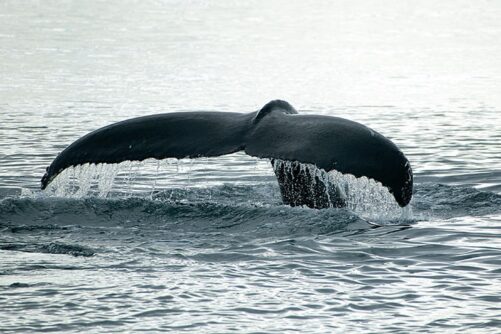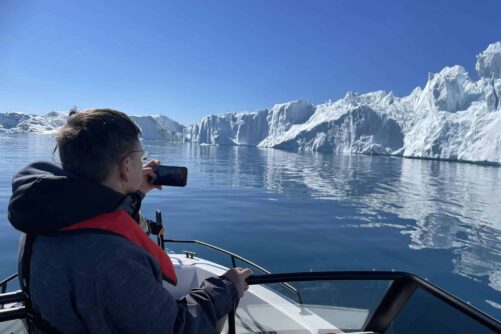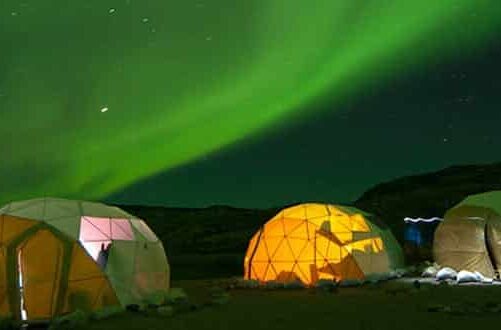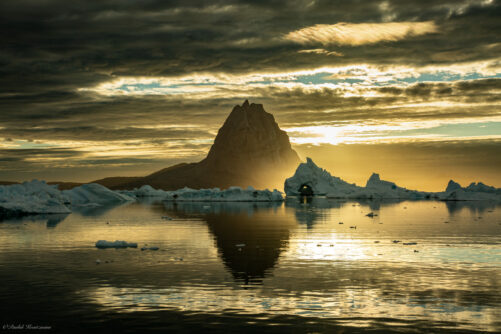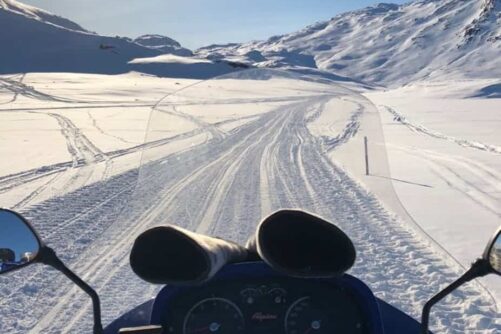
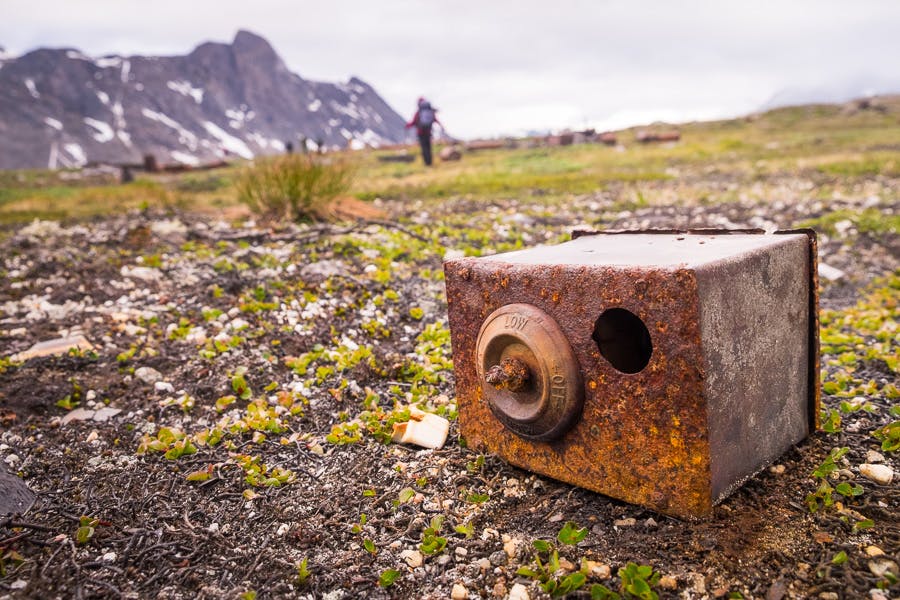
Exploring Bluie East Two – an Abandoned WWII Air Base in East Greenland
Published: 25/06/2020
Reading time: 5 minutes
During WWII, Greenland was host to several allied bases that enabled navigation, communication, and the transportation of goods between North America and Europe. Abandoned for more than 70 years, I visited one of these bases – Bluie East Two – as part of the 12-day Unplugged Wilderness Trek in East Greenland.
As current trans-atlantic flights attest, one of the shortest routes between North America and Europe passes directly over Greenland. For this reason, the world’s largest island was once an important link in the North Atlantic air ferry route during World War II, and flying into Narsarsuaq (South Greenland) or Kangerlussuaq (West Greenland) these days, you are actually landing on the modernised runways of old WWII air bases.
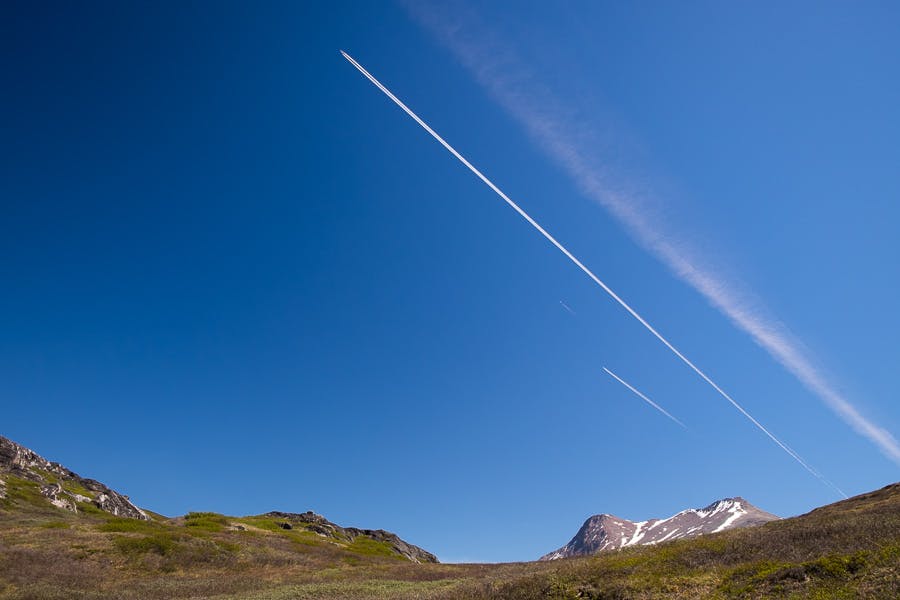
Major WWII Air Bases in Greenland
Narsarsuaq (code named Bluie West One) was the most important of these air bases and the command center for Greenland Operations. Kangerlussuaq (Bluie West Eight) operated as a backup runway (in case of bad weather at Narsarsuaq) and also as a search-and-rescue, radio and weather reporting station.
While these two bases found new leases on life as civilian airports in later years, a third air base – Bluie East Two in East Greenland – was not so lucky.
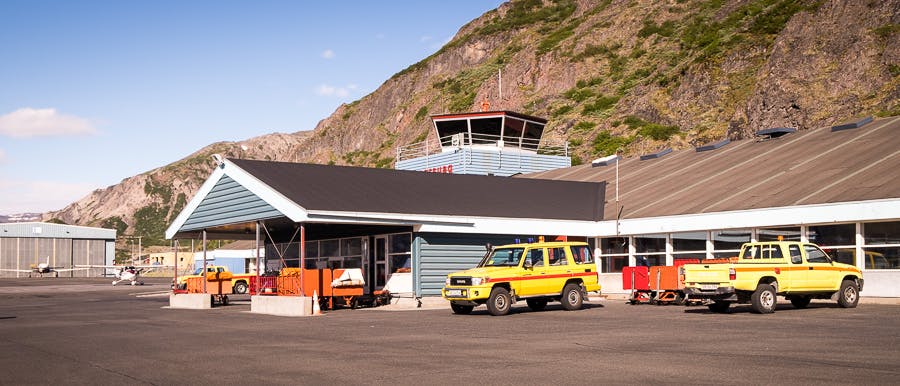
Established in 1942 after an exhaustive search amidst the craggy peaks of East Greenland for a location that could support a 1,500m runway, Bluie East Two operated mostly as an alternate airfield, as well as a base for meteorology, navigation and search-and-rescue.
Then, in 1947, the United States simply downed tools and walked away.
What they left behind is in such stark contrast to the pristine nature that exists in the rest of Greenland, it is difficult to imagine.
Bluie East Two in 2017
70 years after it was abandoned, I visited Bluie East Two as part of the Unplugged Wilderness Trek with Greenland Adventures by Icelandic Mountain Guides. After 5 days of hiking in this remote part of Greenland, it was strange to come across signs of human activity as we walked towards the river that marks the northern edge of the airfield.
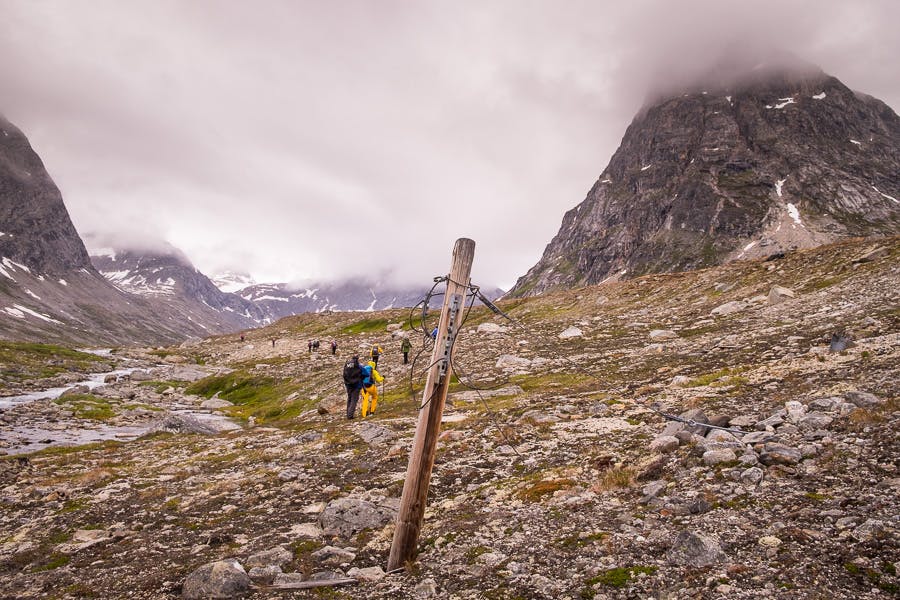
Once across the half-ruined bridge, a trail of rusted odds and ends and splintered wood led us towards the center of one of the biggest human scars on the landscape of East Greenland.

The first thing that struck me as I crested a small rise for a panoramic view of the site was the number of rusted fuel barrels. More than 10,000 litter the landscape like so many discarded cigarette butts. Long drained of any usable fuel by enterprising locals, they have slowly been disintegrating into the small watercourses that criss-cross the land, leaching into the otherwise pure waters of the Sermiligaaq Fjord.

Picking my way between fuel drums and asbestos-laden building materials, I kept a wary eye out for upright nails and other potentially lethal objects as I made my way down to the remains of the massive hanger. This steel skeleton hunches above the air strip, crumpled in neglect and guarded by a large rusted truck that has sunk into the ground to half-way up its wheels.

Dozens more vehicles are parked haphazardly a little further away, and everywhere there are the broken remains of what was required to an equip an air base in this remote and difficult location.
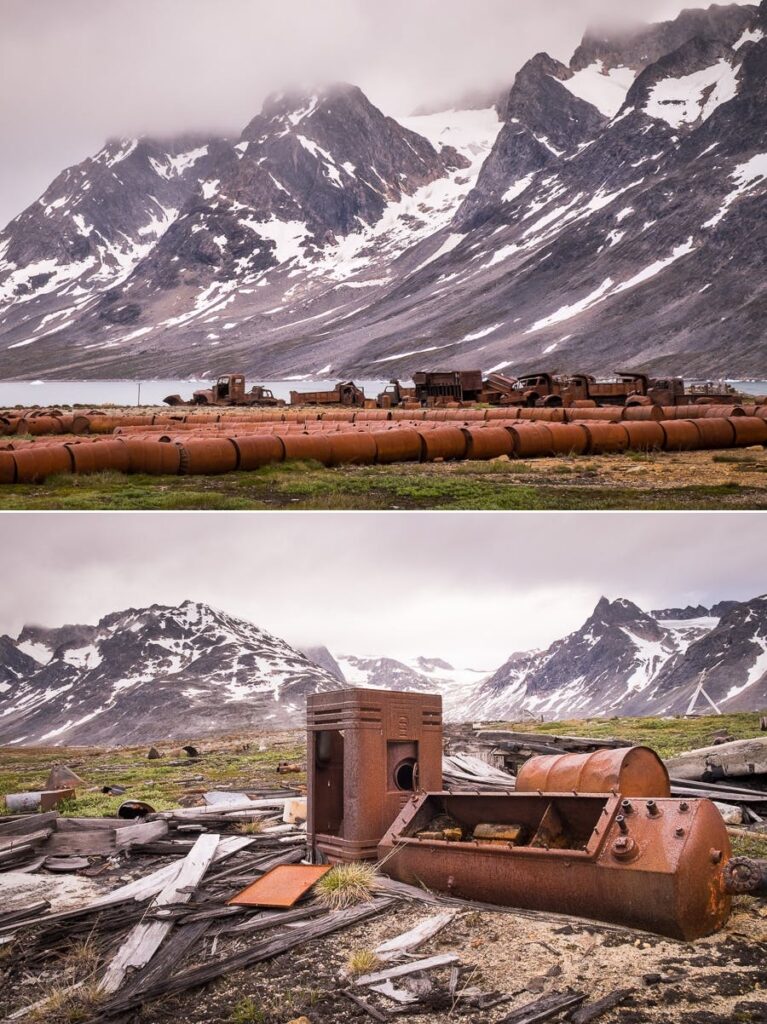
Wandering towards the fjord, I came across the gravel air strip itself, which lies sandwiched between tall mountains on a stretch of land only just big enough to accommodate it. It has been used only a handful of times in the past several decades and evidence of these rare landings are now etched into its soft surface.
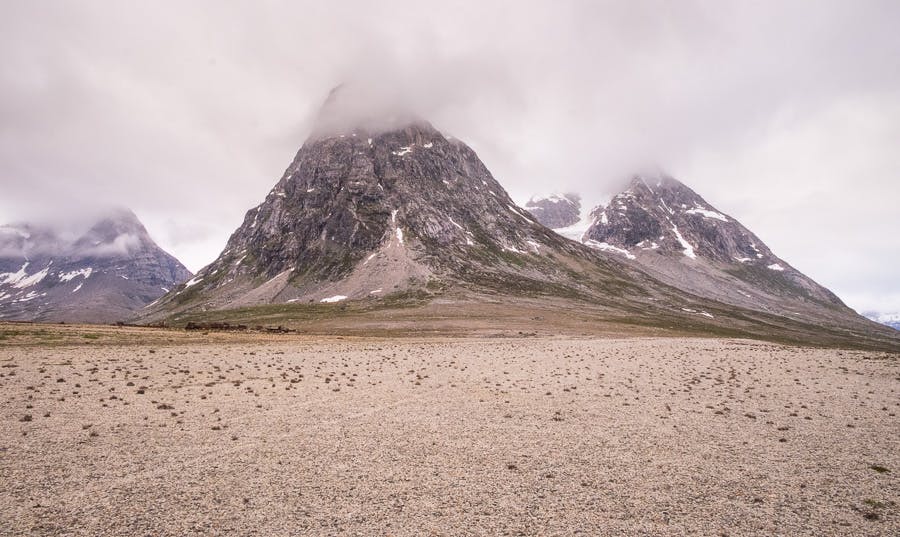
Here, I paused.
Facing towards the fjord, I could embrace and relax into the natural beauty and peaceful silence that I always find in such remote places. Facing the opposite direction, my whole being was affronted by this uncaring intrusion left to rot by humans, and the silence seem to carry with it a hint of despair.
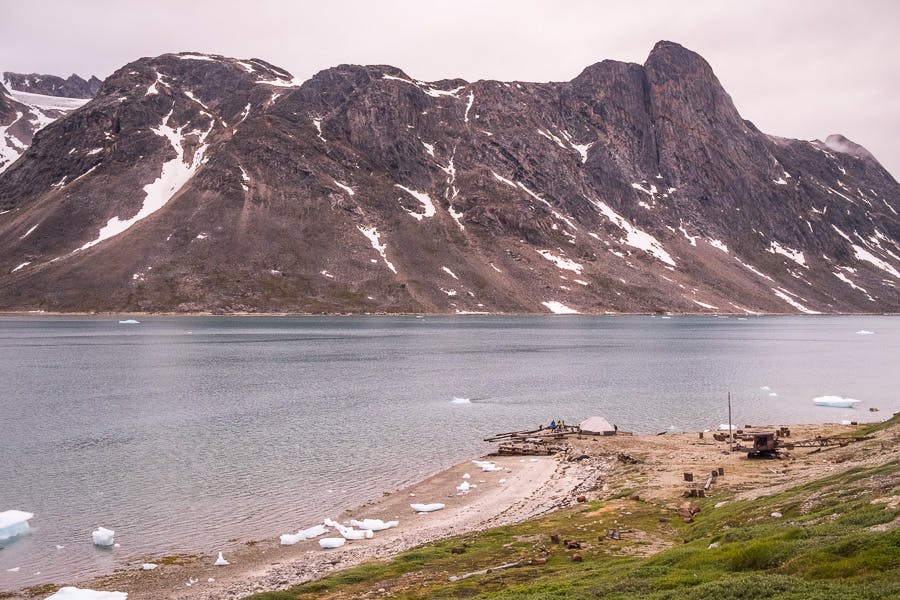
That night we camped on the old dock for the air base, surrounded by more of the rusting detritus and thoughts that “somebody should be doing something about this”.
The Future of Bluie East Two
Little were we to know that within 6 months, Denmark would enter into an agreement with Greenland and commit almost USD$30 million to clean up Bluie East Two and many other derelict WWII sites scattered across the country. This is fantastic news for the environment in Greenland, but means that if you do want to visit Bluie East Two, you will need to act soon before it is disappears.
Read more travel blogs from Lisa Germany
-
Includes 7 passengers!

Whale Safari | Private Charter | Qasigiannguit | Disko Bay
Tour startsQasigiannguitDuration3 hoursFrom 3800 DKKSee more -

Snowshoe to the top of Lille Malene | Nuuk
Tour startsNuukDuration5 hoursFrom 3190 DKKSee more -

City walk | Uummannaq | North Greenland
Tour startsUummannaqDuration2 hoursFrom 600 DKKSee more -

Sea Safari | Sisimiut | North Greenland
Tour startsSisimiutDuration2 hoursFrom 1000 DKKSee more -
Group pricing

Heart of Greenland | The Capital Nuuk
Tour startsNuukDuration4 daysFrom 16228 DKKSee more -
5.00(5)Small groups

Iceberg Safari with open boat | Ilulissat | Disko Bay
Tour startsIlulissatDuration2 hoursFrom 1200 DKKSee more -

Qorlortorsuaq Hike | Qeqertarsuaq | Disko Bay
Tour startsQeqertarsuaqDuration2 hoursFrom 595 DKKSee more -
4.43(7)

Daytour to Eqi Glacier | Ilulissat | Disko Bay
Tour startsIlulissatDuration9 hoursFrom 2450 DKKSee more -
Price for 4 people!

Hot Spring Uunartoq & Glacier landing by Helicopter | Qaqortoq | South Greenland
Tour startsQaqortoqDuration2.5 hoursFrom 24400 DKKSee more -
Flights Included!

Northern Lights Explorer | South Greenland
Tour startsFrom IcelandDuration8 daysFrom 22200 DKKSee more -

Ice fishing | Uummannaq | North Greenland
Tour startsUummannaqDuration5 hoursFrom 2000 DKKSee more -
1 to 6 passengers included!

Private Midnight Sun Tour | Uummannaq | North Greenland
Tour startsUummannaqDuration3 hoursFrom 7200 DKKSee more -
Price for 4 people!

Glacier Landing by Helicopter | Qaqortoq | South Greenland
Tour startsQaqortoqDuration1.5 hoursFrom 17200 DKKSee more -
Micro Cruise & flight to Greenland!

East Greenland Explorer Micro Cruise | Scoresby Sund
Tour startsFrom IcelandDuration10 daysFrom 93000 DKKSee more -
5.00(3)Driver included!

Snowmobile tour to UNESCO viewpoint | Ilulissat
Tour startsIlulissatDuration2 hoursFrom 1500 DKKSee more -

Boat tour to Qarajaq Glacier | Uummannaq | North Greenland
Tour startsUummannaqDuration8 hoursFrom 4300 DKKSee more -
5.00(1)Flightseeing with landing!

ISUA Glacier Adventure By Helicopter | Ilulissat | Disko Bay
Tour startsIlulissatDuration1.5 hoursFrom 4695 DKKSee more -

Boat tour to Saattut Settlement | Uummannaq | North Greenland
Tour startsUummannaqDuration2 hoursFrom 1300 DKKSee more -
New Tour!

Private Kayak Tour in Ilulissat Icefjord from the boat | Ilulissat
Tour startsIlulissatDuration2 hoursFrom 1400 DKKSee more




